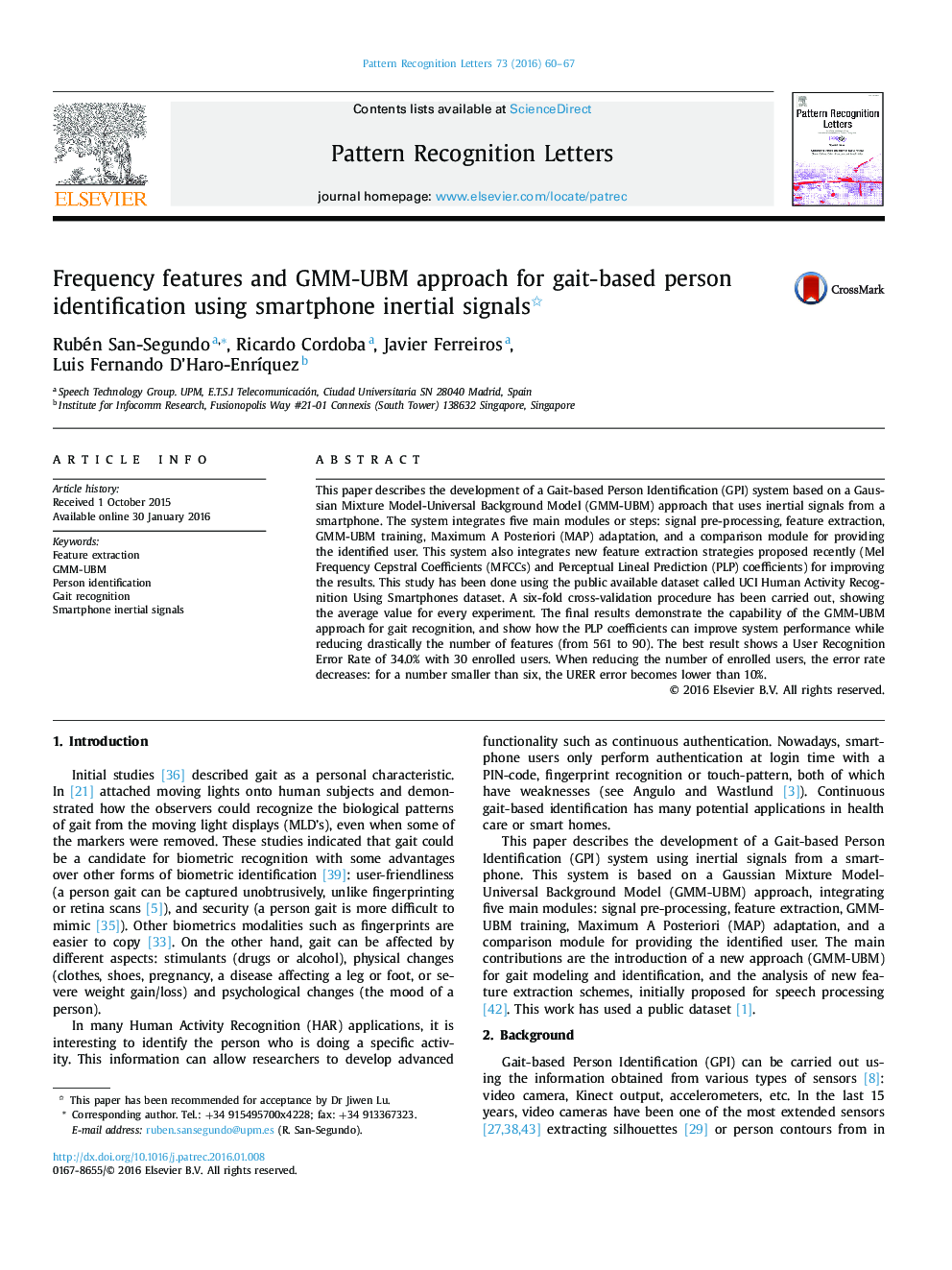| Article ID | Journal | Published Year | Pages | File Type |
|---|---|---|---|---|
| 536186 | Pattern Recognition Letters | 2016 | 8 Pages |
•Gait Recognition using Gaussian Mixture Model-Universal Background Model.•Frequency-based feature extraction from Inertial Signals.•Important dimensionality reduction.
This paper describes the development of a Gait-based Person Identification (GPI) system based on a Gaussian Mixture Model-Universal Background Model (GMM-UBM) approach that uses inertial signals from a smartphone. The system integrates five main modules or steps: signal pre-processing, feature extraction, GMM-UBM training, Maximum A Posteriori (MAP) adaptation, and a comparison module for providing the identified user. This system also integrates new feature extraction strategies proposed recently (Mel Frequency Cepstral Coefficients (MFCCs) and Perceptual Lineal Prediction (PLP) coefficients) for improving the results. This study has been done using the public available dataset called UCI Human Activity Recognition Using Smartphones dataset. A six-fold cross-validation procedure has been carried out, showing the average value for every experiment. The final results demonstrate the capability of the GMM-UBM approach for gait recognition, and show how the PLP coefficients can improve system performance while reducing drastically the number of features (from 561 to 90). The best result shows a User Recognition Error Rate of 34.0% with 30 enrolled users. When reducing the number of enrolled users, the error rate decreases: for a number smaller than six, the URER error becomes lower than 10%.
